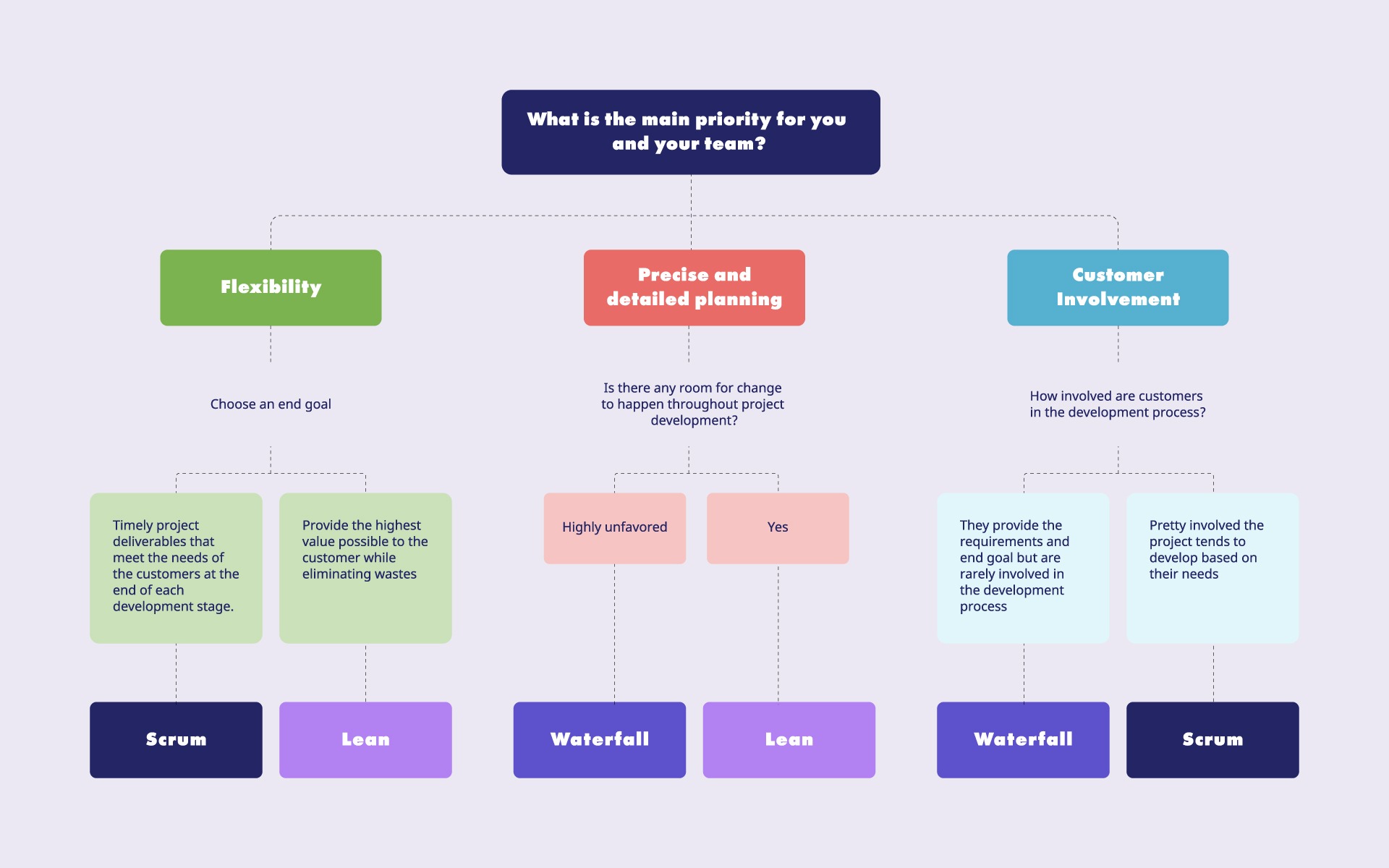The responsibilities of a project manager (PM) are elaborate and sometimes never-ending. From project planning and execution to monitoring and closing, you have a lot to manage. Now for a new PM, all of these responsibilities can be overwhelming – but it is never impossible when the right project management framework is in place.
Just like how every house needs a strong foundation, you need a framework that can help you deliver your project successfully and effectively. A framework gives your project a structure and much of the processes required for project execution, but it still allows room for other practices and tools to be included. Additionally, it will make it easier for you to adopt relevant methodologies that can help guide the processes to achieve a particular goal.
There are several frameworks to choose from like Waterfall, Scrum, Lean, Extreme Project Management, PRINCE2, and Critical Chain Project Management. This article will discuss three of the most popular and common frameworks which are waterfall, scrum, and lean. Most importantly, how to choose between them for your project needs.
Waterfall
A traditional project management framework, waterfall is a linear approach to project delivery. There is a fixed timeline and project development takes place in sequential phases, so each development stage depends on the work done in the previous one.
A key tool in waterfall projects is a Gantt chart as it helps PMs visualize the entirety of project development. Through waterfall, risks are mitigated, job scopes are well-defined, and errors can be minimized because extensive planning is done in the early stages of project development.
It works best when you have a project that needs to strictly follow a set of processes, adhere to the requirements, and produce end-products that are fixed. Projects that develop physical products can benefit from this framework as it offers a viable work-breakdown structure. However, this framework isn’t a fit for projects that don’t have clear requirements or need greater flexibility to adapt to customer feedback, as is common in modern software development.
Scrum
Scrum stems from the Agile methodology where flexibility is key. There are no fixed processes or tools, allowing teams to respond to change when needed. It is the complete opposite of waterfall where a small piece of the product is released at every project development stage.
Each project development stage is incremental and usually only takes about one to two weeks (also known as sprints). Scrum also thrives on collaboration, so meetings are pretty frequent to allow discussion of progress and setbacks.
According to The 2015 State of Scrum Survey Report, 87% of scrum adopters have reported a boost in the quality of life for their teams – a result of highly collaborative work interaction. This modern-day framework also helps PMs ensure that project deliverables are timely and within the budget.
Digital-led projects like software development benefit from scrum. Albeit, scrum project life cycles are pretty intense. PMs need to be more attentive to each deliverable, considering how compact sprints can be and how responsive teams need to be.
Lean
To choose lean is to minimize waste while maximizing value. The goal is to meet the needs of a project with the minimum amount of resources, labor, and time. Based on the principles of lean manufacturing, lean projects focus on producing higher-value products while reducing any kind of waste like storage space, working hours, maintenance costs, and investment prices.
From lean, came Kanban, another famous framework that uses a visual system for managing work as it moves through a process. Many PMs leverage Kanban alongside lean as it helps to visualize the workflow and the actual work that takes place at each stage.
Lean helps PMs identify and eliminate redundant project development activities and the overuse of tools or team members’ capacity. PMs can also effectively avoid operational bottlenecks – when every unit of work is properly mapped out to ensure there is a value stream, unnecessary processes are eliminated, creating a solid and clear workflow.
Choosing lean is rewarding, as it allows for continuous project management improvement. Lessons from previous projects create improved project management practices in the future. There is also a sense of agility in lean, since valuable product delivery is key – teams can quickly adapt to customers’ evolving needs. This is on top of lower production costs, higher customer satisfaction, and improved productivity. However, lean isn’t always the best fit for teams that lack experience since it calls for precision – errors are just more waste in lean.
Choosing the Right Framework
Committing to a framework is only practical once you’ve identified your project requirements. Knowing your time, budget, objectives, and tools can help you decide which framework can best support your project needs. Apart from that, you must ask yourself the right questions and understand your project comprehensively.
Some key questions to consider:
-
What is the main priority for you and your team?
-
Do you have a definite goal set for the project?
-
Can your team adapt to changes and be flexible throughout the project?
-
How involved are your customers in the project development process?
-
How tight are you on time and cost?
You must also know the priorities of the business, the goals you want to achieve, and the practices that should be in place. Still unsure of which framework to go for? The flowchart below will help you decide:
The flowchart is designed to help you direct your focus to the best framework based on your main priorities, project end goals, requirements, agility, and customers’ involvement in the development process.
While the indicators are pretty generic, they still address key considerations of project management. If you identify with two main priorities and end up with two different frameworks, you could either: re-evaluate the kind of resources you have and see which one of them is more feasible to commit to, or choose a hybrid approach where you combine the two in ways that meet project requirements best.
Again, asking the right questions can guide you in the right direction.
One Step Closer to Success
With that in mind, nothing is set in stone – well, except maybe for waterfall projects – so it’s important to revisit the details of each framework, and evaluate how you can best adopt it to meet your end goals.
Afterall, a framework doesn’t dictate your practices and tools, it simply provides you with a structure to follow – and there are plenty out there for you to choose from!
Nevertheless, anytime you get ‘stuck’ in the selection process, just use the guide to help you redirect your focus. Good luck!


